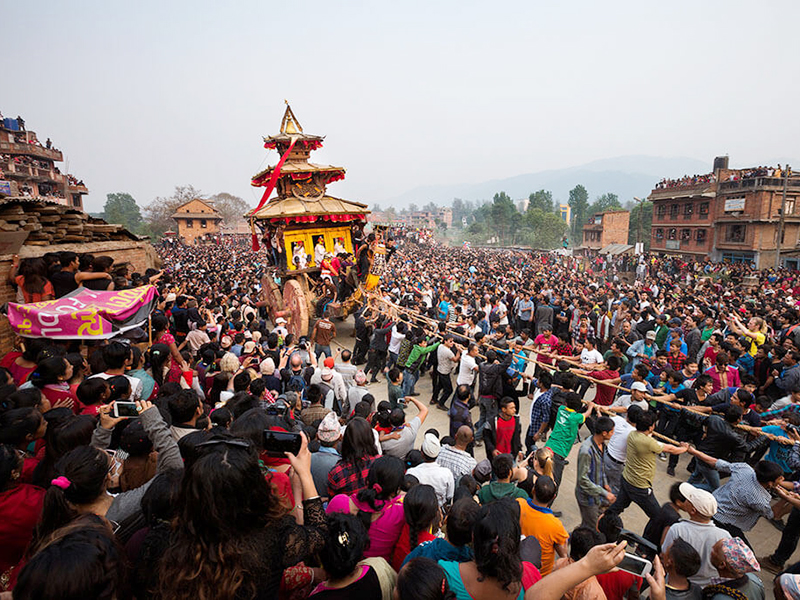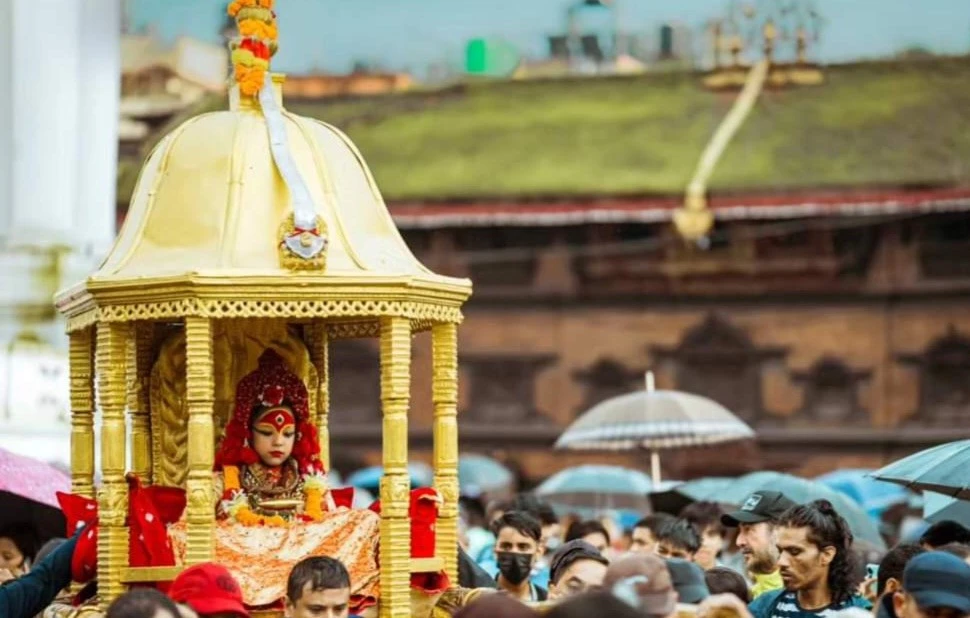Share this Article
Nepal, with its rich cultural heritage, is home to a vast array of traditional instruments that play an integral role in religious, spiritual, and cultural practices. Among these instruments, bells and gongs hold significant importance, symbolizing a deep connection to both the divine and the earthly realms. These sacred objects are not just musical tools, but are considered powerful symbols that evoke spiritual energy, mark important moments, and invite divine presence into daily life. The traditional Nepali bells and gongs are essential components of religious rituals, community events, and celebrations in various parts of the country.
1. The Sacred Role of Bells in Nepali Culture
1.1 Bells in Hindu and Buddhist Traditions
Bells, or ghanta in Nepali, have an important role in both Hinduism and Buddhism, the two predominant religions in Nepal. They are used extensively in temples, monasteries, and during various festivals and rituals. The sound of the bell is believed to have the power to call upon divine energies, dispel negative forces, and create an atmosphere conducive to spiritual focus and meditation.
In Hindu rituals, bells are rung to signify the beginning of a prayer or to invite the presence of deities. It is said that the ringing sound purifies the space, ensuring that all distractions and evil spirits are driven away, allowing devotees to focus on their prayers or meditation. The bell is typically rung when offering prayers, food, or incense to gods, creating a spiritual connection between the physical and spiritual realms.
In Buddhism, especially within the Tibetan Buddhist tradition, bells are used during pujas (rituals), meditation, and chanting. A singing bell or dhvani bell, known for its prolonged resonating tone, is considered to symbolize the emptiness of all phenomena and the impermanence of life. The clear sound is believed to represent the awakening of spiritual consciousness and is often used in conjunction with prayer wheels and mantras to enhance spiritual practices.
1.2 The Symbolism of Bell Sounds
The sound of a bell in Nepali culture carries profound spiritual meaning. The act of ringing the bell is believed to invite positive vibrations, purity, and divine protection into the space. It is also associated with the call to prayer and sacred offerings, and often marks the arrival of auspicious moments in festivals, rituals, and ceremonies.
- The tone of the bell: The sound of a bell can represent different divine attributes. A high-pitched tone symbolizes purity, clarity, and the divine; while a low-pitched tone can symbolize earthly matters and balance.
- Echoing Sound: The echo of the bell is symbolic of the cosmic sound that reverberates throughout the universe, reminding individuals of the unity between the physical and spiritual worlds.
2. The Role of Gongs in Nepali Rituals
2.1 Gongs in Hindu and Buddhist Ceremonies
Gongs, larger and deeper in sound than bells, are used prominently in both Hindu and Buddhist ceremonies in Nepal. Gongs are typically hung in temples, monasteries, and stupas. The sound produced by gongs has a profound spiritual significance, often linked to the vibrations of the universe, communication with the divine, and the clearing of negative energy.
In Hinduism, gongs are traditionally used during pujas and festivals to summon deities, create an atmosphere of reverence, and enhance the significance of sacred ceremonies. The gongs’ resonating sound helps to establish a ritualistic space that facilitates spiritual focus and community gathering.
In Buddhist practices, particularly within the Tibetan Buddhist community, gongs are often played during chanting ceremonies and meditation practices. The gongs' deep vibrations are believed to represent the spiritual awakening and to guide practitioners toward enlightenment.
2.2 The Spiritual and Healing Power of Gongs
Gongs are believed to carry a vibrational resonance that not only has a spiritual effect but also promotes healing. The sound waves produced by a gong are thought to penetrate the body and mind, restoring balance and harmony within individuals and their environment. In many traditional healing practices, gong therapy is used to cure physical ailments and to reduce mental stress and anxiety. The gong is thought to stimulate chakra energy centers and improve the flow of prana (life energy), bringing healing to both the spiritual and physical body.
2.3 Gongs in Festivals and Celebrations
Gongs are often played during important cultural and religious festivals, such as Dashain, Tihar, and Buddha Jayanti. During these festivals, the sound of the gong signifies the beginning of the celebration, setting the tone for the sacred rituals and community activities. In larger festivals, particularly in the Kathmandu Valley, gongs can be heard echoing throughout the streets, temples, and open courtyards, creating a collective spiritual atmosphere that binds the community together in devotion and celebration.
3. The Significance of Bell and Gong Pairing
In many Nepali temples, especially those with Hindu and Buddhist influences, bells and gongs are used in tandem, each playing a complementary role in the ritualistic and meditative process. The gong, with its deep vibrations, establishes a sacred space and signals the start of a ceremony. The bell, with its sharp, clear sound, symbolizes purity and acts as an instrument of devotional focus.
Together, these instruments create a spiritual synergy, inviting divine energy, and facilitating an environment where individuals can align their mind, body, and soul to the divine. In some rituals, the bell is used to mark specific moments of prayer or offering, while the gong provides a backdrop that resonates through the entire ceremony, enhancing the collective spiritual experience.
4. Cultural and Artistic Value of Bells and Gongs
Bells and gongs in Nepal are not only tools for religious rituals but are also cherished artisanal objects. The creation of these objects involves a high level of craftsmanship, often passed down through generations of metalworkers and artisans. The bells and gongs are typically made from bronze, brass, or copper and may be adorned with intricate designs, symbols, and engravings that carry their own symbolic meanings. These designs often include images of deities, auspicious symbols like lotus flowers, and sacred mantras that enhance the spiritual potency of the objects.
The tradition of crafting bells and gongs is deeply rooted in Nepali culture, with many artisans in the Kathmandu Valley and other regions continuing the practice to this day. The making of these instruments is not only a spiritual act but also an important part of Nepal's cultural heritage, preserving both craftsmanship and religious symbolism.
5. Conclusion
Traditional Nepali bells and gongs are powerful spiritual symbols that have played an integral role in the religious and cultural life of Nepal for centuries. They are not merely instruments of sound, but vehicles of divine connection, ritual significance, and spiritual transformation. From their use in sacred ceremonies to their ability to heal and promote spiritual awareness, these objects continue to hold deep meaning in the lives of Nepali people. The sound of the bell and gong transcends the material world, providing a spiritual bridge between the physical and the divine, and binding communities together in worship, reverence, and celebration.
Categories:
Culture & Traditions
,
History & Heritage
,
Lifestyle & Local Life
Tags:
tradition
,
Heritage







